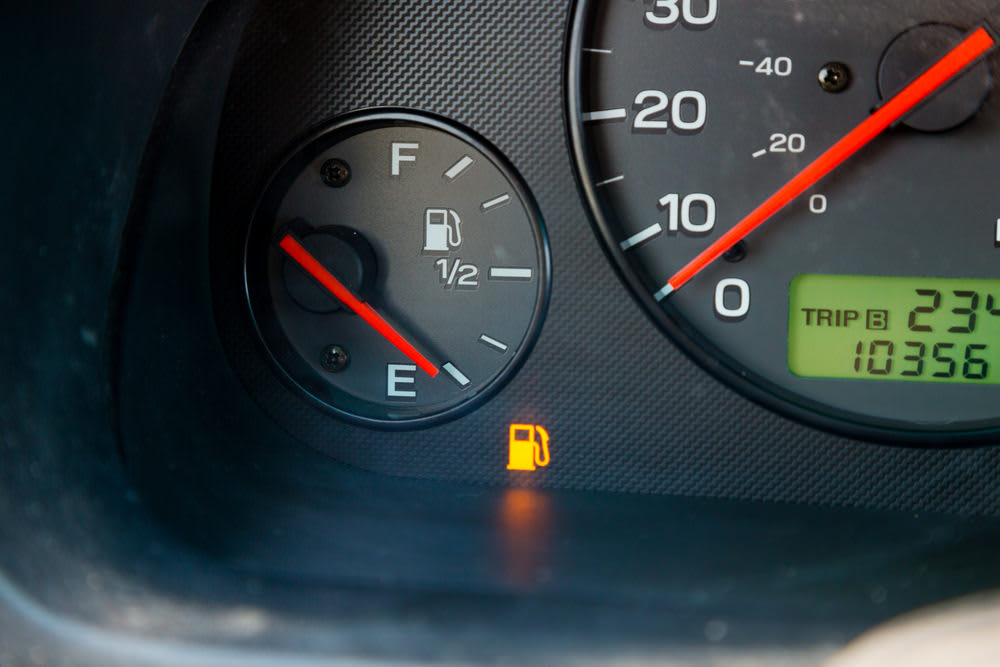

Going to the gas station is a chore and many of us wait until the gas light is on and the tank is nearly empty. But waiting until your fuel tank dries up is a bad habit, and the consequences can be severe. Some people tend to take this light lightly, regarding it as more of a reminder than a warning. But this warning light is the same as any other on the dash: it indicates a condition the vehicle is in that could potentially cause damage. There are a lot of problems that can go wrong when gas gets low, and they range from relatively minor to very serious.
Common concerns when running on a low tank of gas:
Sediment build-up can clog your engine: Sediment from gasoline settles at the bottom of the tank. When you run the tank low, it forces the car to stir up sediment and push it through the engine. There’s a good chance the car’s fuel filter won’t be able to catch all of it, especially if you drive on empty on a regular basis. This risks clogging the fuel pump pick-up, the fuel line, or the fuel injectors. You can also clog all three at once, causing significant and costly damages. At the very least, you’ll have to get the fuel filter replaced more often. Lastly, if heavy sediment gets all the way into the engine it can scar it or damage internal parts. In the best case scenario, the engine needs to be flushed, which can cost a couple hundred dollars. In the worst case scenario, you’ll have to get the engine replaced.
Fuel pump wear: The fuel pump does just what it says: it pumps fuel into the engine. A constant supply of fuel keeps it well lubricated and cool, ideal conditions that keep it in good working order for a long time. The fuel pump draws in more air when fuel runs low, which creates hotter, drier conditions that cause it to wear out prematurely. So, if you’re always running your tank low, you’re stressing out your fuel pump and you will need to get it replaced sooner rather than later.
Becoming stranded: There is no standard in place to tell you exactly how long you have after your gas light turns on before you completely run out of gas. Becoming stranded can be more of a dangerous event than an inconvenient one. Power steering and power breaks are impaired when the car shuts off, so maneuvering in traffic becomes difficult and dangerous. If you run out of gas on a road with no shoulder, you’re in a situation that puts you and every driver around you at risk of an accident. Fortunately, running out of gas is easy to avoid: all you have to do is fill up the car.
Is diesel fuel any different?
Getting air trapped in the fuel delivery system in a diesel engine is actually worse than other engines. The consequence of this is starting the grueling and costly process of taking the system apart to get the air out.
Easy solutions and tips:
Maintaining a steady and plentiful fuel supply to your engine comes down to one simple and obvious idea: don’t let your gas tank get low. Here are a few standards you should practice to help keep your tank full so your car stays in good running condition:
Fill up the tank when it’s no less than ¼ full.
Don’t rely on guessing to see how much fuel you have left, so before you head out on a long journey, make sure you fill up. If you end up in traffic, you’ll have a longer ride than you thought, but you’ll also be prepared.
Use a gas app to locate nearby gas stations with the best prices (there are many - check out GasBuddy on iTunes, or GasGuru on Google Play).
It is imperative that you call a mechanic if you constantly run your car on empty.



